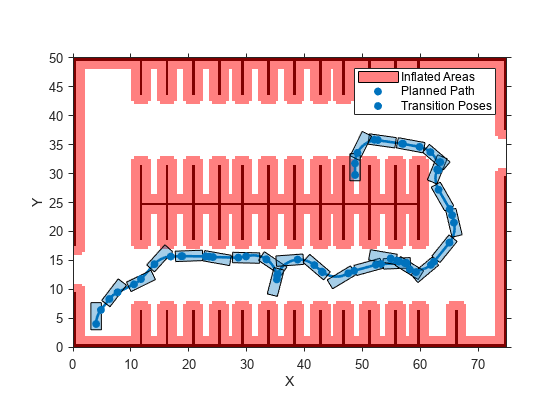driving.ReedsSheppPathSegment
Reeds-Shepp path segment
Description
A driving.ReedsSheppPathSegment object represents a segment of a planned vehicle
path that was connected using the Reeds-Shepp connection method [1]. A Reeds-Shepp path
segment is composed of a sequence of three to five motions. Each motion is one of these
types:
Straight (forward or reverse)
Left turn at the maximum steering angle of the vehicle (forward or reverse)
Right turn at the maximum steering angle of the vehicle (forward or reverse)
The driving.ReedsSheppPathSegment objects that represent a path are stored in the
PathSegments property of a driving.Path
object. These paths are planned by a pathPlannerRRT
object whose ConnectionMethod property is set to
'Reeds-Shepp'.
Properties
Examples
References
[1] Reeds, J. A., and L. A. Shepp. "Optimal Paths for a Car That Goes Both Forwards and Backwards." Pacific Journal of Mathematics. Vol. 145, Number 2, 1990, pp. 367–393.
Extended Capabilities
Version History
Introduced in R2018b

